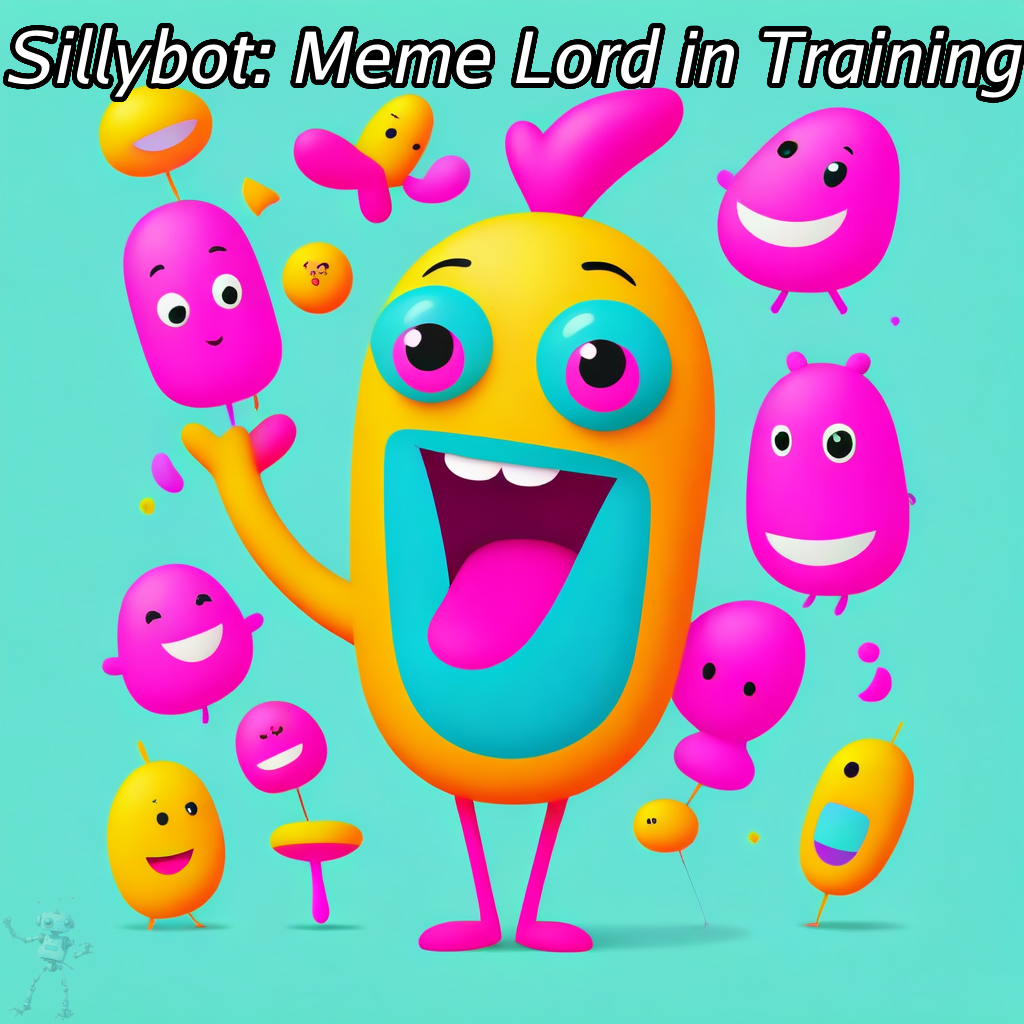A simple Discord and Slack bot written in Go that natively serves LLM and Stable Diffusion to chat, generate images, and memes!
I made a talk about it: youtu.be/uGkrjsMl-ok!

Type in chat:
/meme_auto sillybot meme generator awesome
Receive:
Talk with it and use its commands as described at:
- For Discord, see cmd/discord-bot/README.md.
- For Slack, see cmd/slack-bot/README.md.
- Generates memes in full automatic mode; it generates both labels and image description.
- Generates memes in manual mode for more precision.
- Chat interface with resettable system prompt.
- Uses WebSocket so no need to setup a web server! 🎉
- Works on Ubuntu (linux), macOS and Windows! 🪟
- Supported backends:
- Uses llama.cpp.
- Optionally uses pytorch python backend for experiments.
- Runs as a chat bot LLM instructs. Tested to work with:
- Gemma-2-9B instruct in quantized form with 8K context window.
- Gemma-2-27B instruct in quantized form with 8K context window.
- Meta-Llama-3.1-8B-instruct in quantized form with 128K context window.
- Meta-Llama-3-70B-instruct in quantized form with 8K context window.
- Mistral-7B-Instruct-v0.3 in quantized form with 32K (!) context window.
- Mistral-Nemo-Instruct-2407 in quantized form with 128K (!) context window.
- Phi-3-mini-4k-instruct "Phi-3.1" in quantized form with 4K context window.
- Phi-3-mini-128k-instruct "Phi-3.1" in quantized form with 128K (!!) context window. Requires a ton of RAM.
- Phi-3-medium-4k-instruct in quantized form with 4K context window.
- Phi-3-medium-128k-instruct in quantized form with 128K (!!) context window. Requires a ton of RAM.
- Qwen2-0.5B-Instruct in quantized form with 32K (!) context window. Extremely small model, super fast. Perfect to run in unit tests.
- Qwen2-1.5B-Instruct in quantized form with 32K (!) context window. Super small model, super fast.
- Qwen2-7B-Instruct in quantized form with 32K (!) context window.
- Runs as an image generator. Tested to work with:
- Segmind SSD-1B coupled with LCM Lora is quite fast. Segmind SSD-1B renders under 10s on a MacBook Pro M3 Max, under 100s on an Intel i7-13700 on Ubuntu and under 160s on a i9-13900H on Windows 11. (Depends on the number of steps selected)
- Stable Diffusion 3 Medium which is too slow on a M3 Max IMO.
- LLM: any <4 years old computer, really. A GPU is not required. If you are
unsure, start with Qwen2 0.5B by using
model: "qwen2-0_5b-instruct-q5_k_m"in thellm:section ofconfig.yml. This requires 1GiB of RAM. Go up with larger models from there.- I recommend to chat with the bot, use the
/metricscommand and iterate to use increasingly larger models as long as you can keep >=200tok/s for prompt parsing and >=20tok/s for generation. - When using models with large context window (>8K) like Llama 3.1 and Mistral Nemo, you may want to explicitly limit the context window to a smaller size like 16384, 32768 or 65536 so it reduces memory requirements. Counter-intuitively, reducing the context window too much will slow down generation.
- I recommend to chat with the bot, use the
- Image Generation: a nVidia GPU with 6GiB of video memory (VRAM) (12GiB is better) or a MacBook Pro. While it works on CPU, expect a minute or two to generate each image.
Pro-tip: You can use 2 computers: one running the LLM and one the image
generation! Start the llm/imagegen server manually then use the remote: option
in config.yml.
Both function essentially the same but the Application configuration on the server (Discord or Slack) is different:
- For Discord, see cmd/discord-bot/README.md.
- For Slack, see cmd/slack-bot/README.md.
This project greatly benefit from llama.cpp by Georgi Gerganov, previous versions leveraged llamafile by Justine Tunney, all open source contributors and all the companies providing open-weights models.
sillybot was created with ❤️️ and passion by Marc-Antoine
Ruel.
